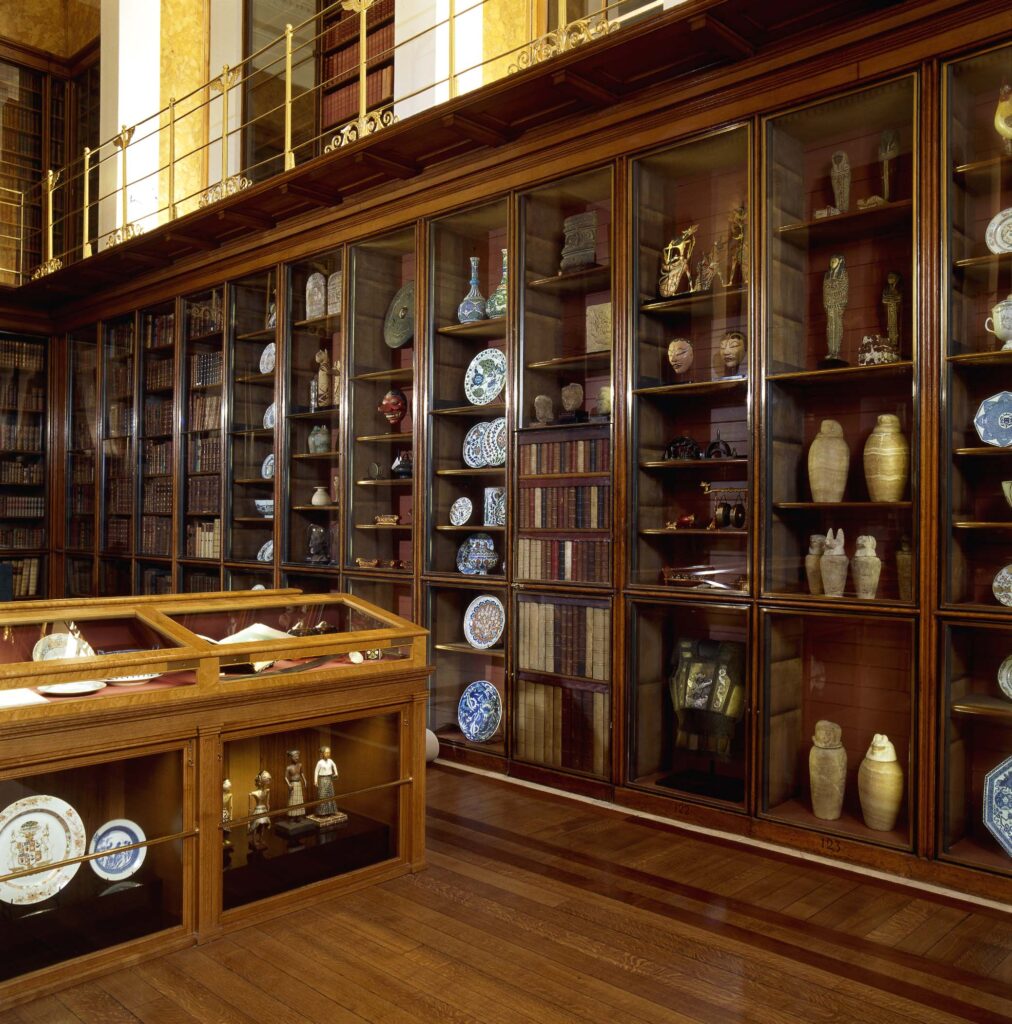Standing in the heart of corporate London, while looking for all the world like a Greek temple, The British Museum is a bastion of curiosity, history, ideas and critical scrutiny of all that has gone before.
Founded in 1753 and opened in 1759, it was the first national museum to cover all fields of human knowledge and the first to welcome members of the public in to share its treasures.
The British Museum is the UK’s most visited cultural attraction, with six million visitors in 2018 and millions more using the museum’s websites to access its world-leading exhibitions and unmatched collections.

The building
Built in Greek Revival style, the Bloomsbury building was completed in 1852 using the latest 19th Century technology, including concrete floors, a cast-iron frame filled with London stock brick and a Portland stone front layer. Its architect, Sir Robert Smirke, wanted to reflect all the ‘wondrous objects housed inside’.
In 1853, the quadrangle building won the Royal Institute of British Architects’ Gold Medal.
The King’s Library (now the Enlightenment Gallery) was the first wing of the new museum’s quadrangular building and was built to house King George III’s collection which included more than 65,000 books. In 1997, the books were transferred to the new building at the British Library at St Pancras in London and, with the room now empty, work began to restore the room to its original 1820s design, work began in 2000 and was completed in 2003, in time to celebrate the museum’s 250th anniversary.
Several designs were considered for the main south entrance, the last wing of the museum quadrangle to be built. The building was designed in the classical style, as was fashionable at the time, with the East and West Wings built for a more domestic purpose, to house some senior Museum staff. The entire front of the museum’s south entrance measures 370 feet and the 43 Greek columns are 45 feet high.
Since then, more recent developments include the round Reading Room with its domed ceiling, and the Norman Foster-designed Great Court, which opened in 2000.
In keeping with the museum’s classical design, an architectural feature known as a pediment was included above the columns. Sir Richard Westmacott’s sculpture for the tympanum, the recessed triangular space forming the centre of the pediment, represents the Progress of Civilisation.
Beginning on the left, it shows the creation of man, represented as he emerges, in his ignorance, from a rock; he then meets the Angel of Religion and learns the basic skills of life, such as cultivating the land and taming animals. Man then expands his knowledge and understanding, and the next eight figures represent his learning in the fields of architecture and sculpture, painting and science, geometry and drama, music and poetry when he finally emerges as an educated man.
The collections
Sir Hans Sloane (1660–1753), physician and President of the Royal Society, amassed a huge collection of more than 80,000 ‘natural and artificial rarities’ with a vast library of over 40,000 books and manuscripts, and 32,000 coins and medals.
The 1753 Act purchased this for the public which, along with the Cotton, Harley and Royal Libraries, became known as the British Museum.
Over the next 260 years, the museum’s wide-ranging collections have grown to about eight million objects covering two million years of human history. Some of these objects were taken or purchased in regions then under British colonial rule before they were purchased, donated or bequeathed to the museum, while others were acquired through excavations, sales and other bequests by collectors.
The latest technology has always been integrated into the construction of the building, including the soaring dome of the Round Reading Room and the Queen Elizabeth II Great Court which encloses it, which was designed by Foster and Partners and opened in 2000. In response to current needs, the World Conservation and Exhibition Centre
opened in 2013.
Support
A number of large organisations, including BP, Samsung, Morgan Stanley and Bloomberg, are long-term corporate supporters of The British Museum, helping ensure the collection continues to be shared with the world.
The British Museum is the UK’s most visited cultural attraction, with six million visitors in 2018 and millions more using the museum’s websites to access its world-leading exhibitions and unmatched collections. Sponsorship opportunities are offered around exhibitions, galleries, temporary displays, curatorial positions and education programmes.
The use of the museum’s galleries and Great Court for evening entertaining is made available to corporate partners and sponsors. With nearly 80 galleries, the museum offers a wide range of entertaining options, from drinks for 1,000 guests in the Great Court to an intimate dinner for 20 guests in the Enlightenment Gallery.
Other benefits include breakfast events, behind-the-scenes tours, discounts on hire costs and at the museum’s shops, cafes and restaurant.

Current exhibitions
Hokusai, The Great Picture Book of Everything: A collection of rare drawings by one of Japan’s most celebrated artists, best known for his iconic print, Under The Wave Off Kanagawa, popularly called The Great Wave. Until January 30, 2022
Peru, A Journey In Time: an exhibition that explores how people have thrived for millennia in one of the most complex and challenging environments on the planet. Exploring the history, beliefs and cultural achievements of the different peoples of Peru from around 2500 BC to the arrival of Europeans in the 1500s. Until
February 20, 2022
Find out more at www.thebritishmuseum.org

